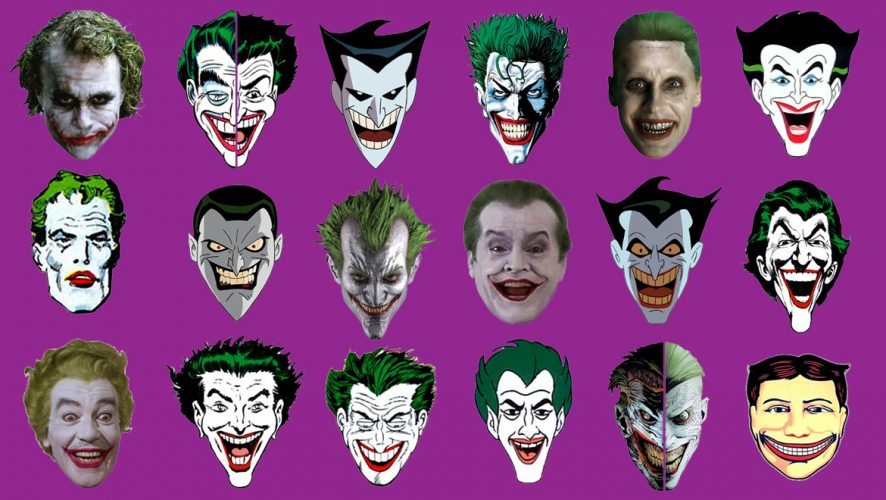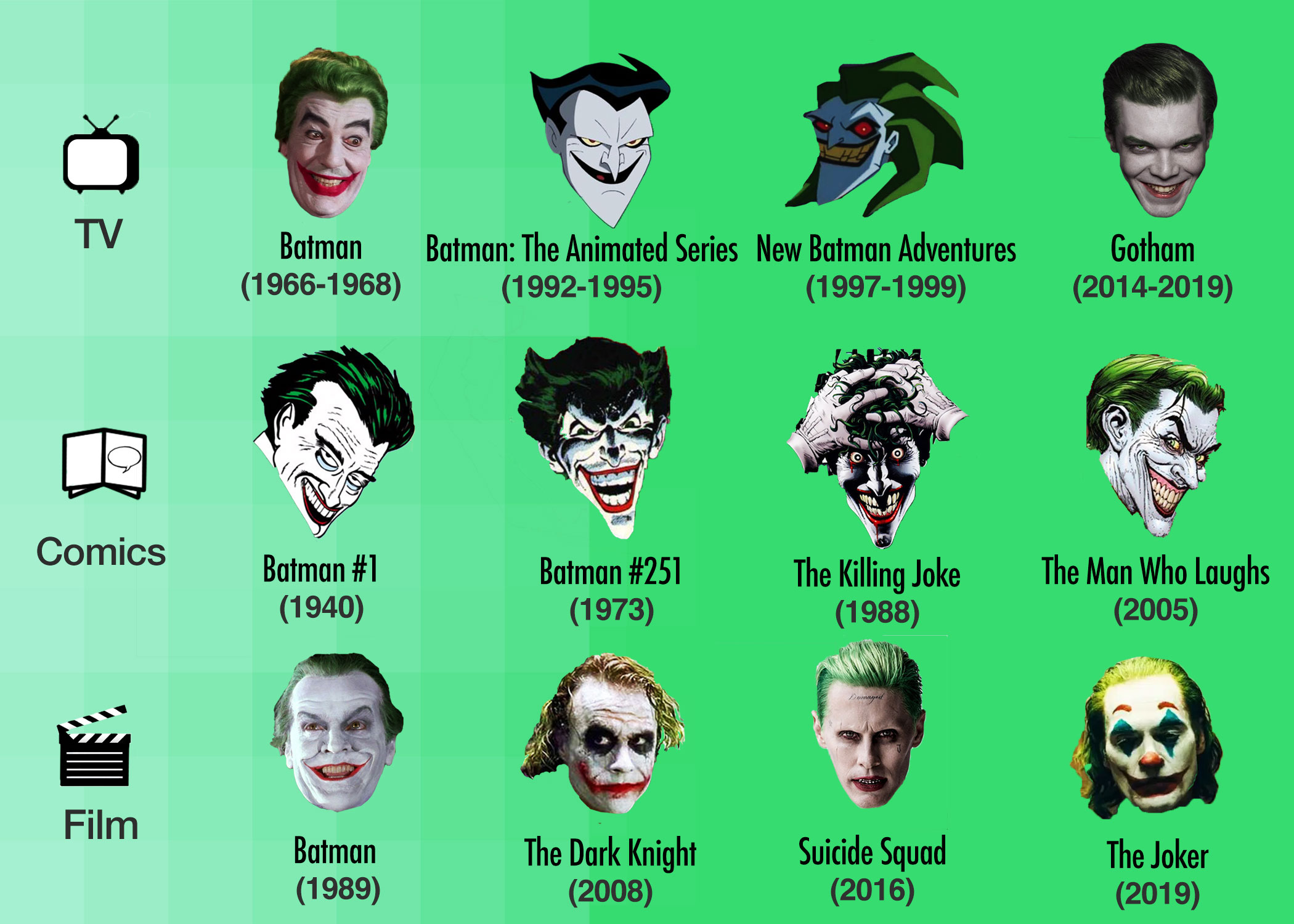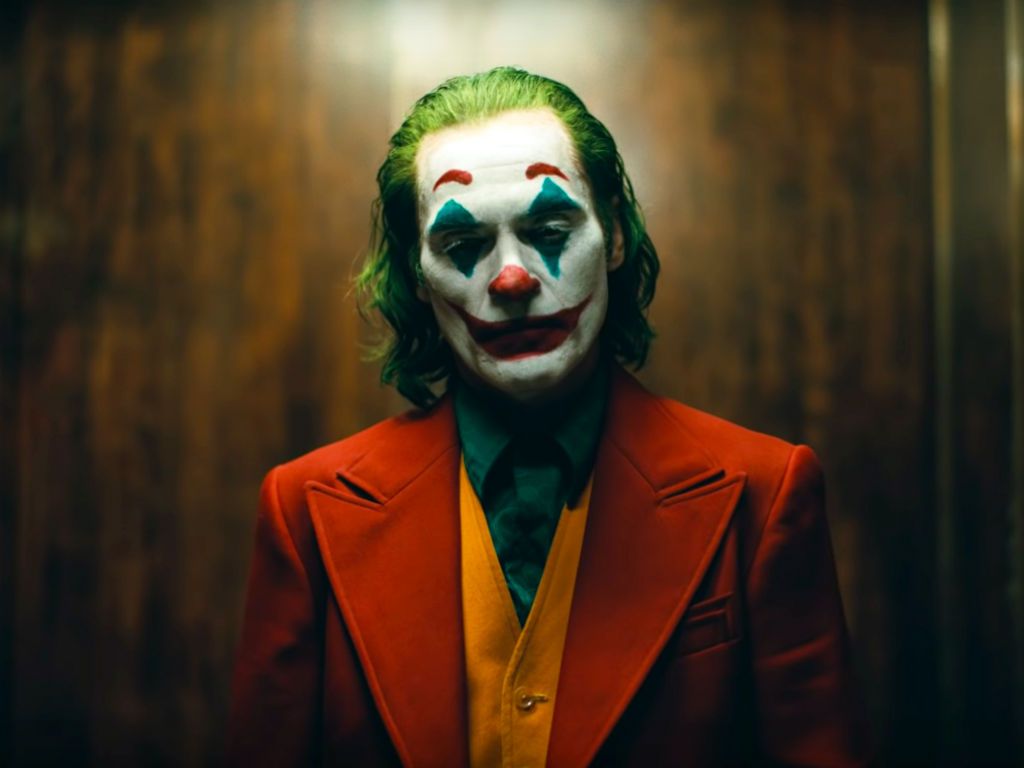Unmasking The Madness: Exploring Every Joker Version
All Joker Versions Explained Which May Appear is a comprehensive guide to the various interpretations of the iconic Joker character. In literature, film, and television, the Joker has been portrayed in a multitude of ways, each with its own unique personality, motivations, and methods of mayhem.
Understanding All Joker Versions Explained Which May Appear allows us to appreciate the character's enduring popularity and cultural impact. His ability to adapt and evolve has made him a timeless villain, capable of captivating audiences with his anarchic spirit and twisted sense of humor. One of the most significant developments in the character's history was the introduction of the Joker's origin story in the graphic novel Batman: The Killing Joke, which shed light on his tragic past and fractured psyche.
This exploration of All Joker Versions Explained Which May Appear will provide valuable insights into the character's motivations, psychology, and enduring legacy.
Read also:Persia White Nude A Bold Exploration Into Style Beauty And Modern Trends
All Joker Versions Explained Which May Appear
Understanding the various interpretations of the Joker character is crucial for appreciating the depth and complexity of this iconic villain. Key aspects to consider include:
- Origin and backstory
- Personality and motivations
- Methods of mayhem
- Relationship with Batman
- Cultural impact
- Different portrayals in film, TV, and comics
- Canonical and non-canonical versions
- Controversies and criticisms
- Enduring popularity
These aspects shed light on the Joker's psychology, motivations, and impact on popular culture. They also highlight the character's adaptability and evolution over time, making him one of the most enduring and fascinating villains in fiction.
Origin and backstory
The origin and backstory of the Joker are crucial to understanding his character and motivations. Different versions of the Joker have varying origin stories, which can significantly impact his personality and actions. Some of the key aspects of the Joker's origin and backstory include:
- The Killing Joke: This graphic novel provides one of the most well-known origin stories for the Joker. It depicts him as a failed comedian who turns to a life of crime after suffering a series of personal tragedies.
- The Dark Knight: In Christopher Nolan's film, the Joker's origin is left ambiguous, but it is implied that he is a former anarchist who was driven insane after being captured and tortured by the mob.
- Joker (2019): This film presents a unique origin story for the Joker, portraying him as a mentally ill loner who is pushed to the brink by a corrupt society.
- The Animated Series: In the popular animated series, the Joker's origin is not fully explored, but it is suggested that he was once a criminal known as the Red Hood who fell into a vat of chemicals, resulting in his disfigurement and insanity.
These different origin stories highlight the malleable nature of the Joker's character. His backstory can be adapted and reinterpreted to fit the needs of different stories and mediums, while still maintaining the core elements of his personality and motivations.
Personality and motivations
The Joker's personality and motivations are inextricably linked to his actions and the impact he has on the world around him. His unique blend of sadism, nihilism, and chaos makes him one of the most unpredictable and dangerous villains in fiction.
The Joker's personality is often characterized by his lack of empathy and remorse. He takes pleasure in causing pain and suffering, and he sees the world as a joke. His nihilistic worldview leads him to believe that there is no meaning or purpose in life, and he embraces chaos and destruction as a way to express his contempt for society.
Read also:South Park Nude A Comprehensive Look Into The Controversy And Creativity
The Joker's motivations are often unclear, but they seem to stem from a deep-seated hatred of humanity. He may have been driven to madness by a traumatic event in his past, or he may simply be a psychopath who enjoys causing pain. Whatever his motivations, the Joker is a force of chaos and destruction who will stop at nothing to achieve his goals.
Understanding the Joker's personality and motivations is critical to understanding his character and the impact he has on the world around him. By analyzing his actions and motivations, we can gain insights into the darkest recesses of the human psyche and the dangers of unchecked nihilism.
Methods of mayhem
The Joker is a master of chaos and destruction. His methods of mayhem are as varied as they are deadly, and they often reflect his own twisted sense of humor. The Joker's methods of mayhem can be seen as a direct result of his nihilistic worldview and his hatred of humanity. He sees the world as a meaningless void, and he takes pleasure in causing pain and suffering as a way to express his contempt for society. The Joker's methods of mayhem are often indiscriminate and unpredictable, which makes them all the more terrifying.
In the real world, the Joker's methods of mayhem have been used by terrorists and other criminals to inflict mass casualties. For example, the Joker's use of chemical weapons in The Dark Knight is reminiscent of the sarin gas attack on the Tokyo subway in 1995. The Joker's methods of mayhem can also be seen in the actions of school shooters and other mass murderers. These individuals often target innocent victims in order to express their own anger and hatred.
Understanding the Joker's methods of mayhem is critical to preventing them from being used in the real world. By analyzing the Joker's actions and motivations, we can gain insights into the minds of criminals and terrorists. This knowledge can help us to develop strategies to prevent future acts of violence and to protect innocent lives.
Relationship with Batman
The Joker's relationship with Batman is one of the most iconic and complex relationships in all of fiction. The two characters are inextricably linked, and their relationship has been explored in countless stories over the years. The Joker is Batman's greatest enemy, but he is also his most important one. Batman needs the Joker to define himself, and the Joker needs Batman to give his life meaning.
The Joker's relationship with Batman has a profound impact on both characters. Batman is a symbol of order and justice, while the Joker is a symbol of chaos and anarchy. Their relationship is a constant struggle between these two opposing forces. Batman wants to stop the Joker's reign of terror, but he also knows that he cannot kill him. The Joker is too important to Batman, and his death would only create a void that would be impossible to fill.
The Joker's relationship with Batman is a complex and fascinating one. It is a relationship that is based on mutual respect and hatred. The two characters need each other, and their relationship is a reflection of the human condition. We all have a dark side, and the Joker is a reminder of that. He is a mirror that we can look into and see our own potential for evil.
Cultural impact
The cultural impact of the Joker character is undeniable. As one of the most iconic villains in all of fiction, the Joker has left an indelible mark on popular culture. His influence can be seen in everything from comic books and movies to television shows and video games. The Joker has even been the subject of academic studies and psychological analysis.
- Influence on popular culture: The Joker has been parodied and imitated countless times in popular culture. His image has been used in everything from advertising to fashion. The Joker has even been the inspiration for real-world criminals.
- Psychological impact: The Joker is a fascinating character from a psychological perspective. His nihilistic worldview and his lack of empathy have made him a popular subject of study for psychologists and criminologists.
- Social commentary: The Joker has often been used as a symbol of social and political unrest. His anarchic tendencies and his hatred of authority have made him a popular figure with anti-establishment groups.
- Influence on other villains: The Joker has been a major influence on other villains, both in the DC Comics universe and beyond. His unique blend of sadism and nihilism has made him a model for other villains who want to create chaos and destruction.
The Joker's cultural impact is a testament to his enduring popularity and his status as one of the most iconic villains in all of fiction. His influence can be seen in all aspects of popular culture, and he continues to be a source of fascination for psychologists, criminologists, and fans alike.
Different portrayals in film, TV, and comics
The Joker has been portrayed in a multitude of ways across different mediums, including film, television, and comics. These portrayals vary in their interpretation of the character's personality, motivations, and backstory, offering unique insights into the psyche of one of the most iconic villains in popular culture.
- Physical Appearance: The Joker's physical appearance has varied significantly across different portrayals, from the classic white face and green hair of Cesar Romero to the more realistic and menacing portrayal by Heath Ledger in The Dark Knight.
- Personality and Motivations: The Joker's personality and motivations have also been interpreted differently. Some portrayals emphasize his sadistic and nihilistic nature, while others explore his more sympathetic and tragic side.
- Origin Story: The Joker's origin story has been subject to multiple interpretations. Some portrayals depict him as a failed comedian who turns to crime after a personal tragedy, while others suggest a more ambiguous or supernatural origin.
- Relationship with Batman: The Joker's relationship with Batman has also been explored in various ways. Some portrayals depict the Joker as Batman's arch-nemesis, while others suggest a more complex and ambivalent relationship.
These different portrayals highlight the malleable nature of the Joker character. His ability to be adapted and reinterpreted for different mediums and audiences is a testament to his enduring popularity and cultural significance. By examining these different portrayals, we gain a deeper understanding of the Joker's complex character and his enduring appeal.
Canonical and non-canonical versions
In examining "All Joker Versions Explained Which May Appear," the distinction between canonical and non-canonical versions plays a critical role. Canonical versions are those that are considered official and part of the established continuity of the Joker character within the DC Comics universe. Non-canonical versions, on the other hand, are those that exist outside of the main continuity, such as alternative timelines, "Elseworlds" stories, or adaptations for other mediums like film and television.
The existence of both canonical and non-canonical versions allows for a rich and multifaceted exploration of the Joker character. Canonical versions provide a foundation and consistency to the character's history and development, while non-canonical versions offer opportunities for creative experimentation and unique interpretations. These non-canonical versions can push the boundaries of the character, explore different aspects of his personality and motivations, and provide fresh perspectives on his relationship with Batman and the DC Universe.
Real-life examples of this can be seen in the various film and television adaptations of the Joker. While the character's portrayal in Christopher Nolan's "The Dark Knight" is considered canonical within the DC Extended Universe, the Joker's appearance in Todd Phillips' "Joker" is non-canonical, offering a distinct and standalone interpretation of the character.
Understanding the relationship between canonical and non-canonical versions is crucial for a comprehensive analysis of "All Joker Versions Explained Which May Appear." It allows us to appreciate the character's evolution and adaptability, while also understanding the core elements that define him within the DC Comics universe.
Controversies and criticisms
Examining "All Joker Versions Explained Which May Appear" involves acknowledging the controversies and criticisms surrounding the character's portrayals and interpretations. These controversies highlight the impact and influence of the Joker while also raising important questions about representation, responsibility, and the boundaries of storytelling.
- Ethical Concerns: The Joker's violent and sadistic nature has sparked debates about the ethical implications of portraying such a character. Critics argue that glorifying violence and mental illness can have harmful effects on audiences, particularly vulnerable individuals.
- Misogyny and Abuse: Certain portrayals of the Joker have been criticized for perpetuating misogynistic and abusive behavior. Critics point to instances where the Joker's violence is directed towards women, reinforcing harmful stereotypes and normalizing violence against women.
- Mental Health Stigma: The Joker's portrayal as a mentally ill individual has drawn criticism for potentially stigmatizing mental illness. Critics argue that depicting mental illness as inherently dangerous and violent contributes to negative perceptions and misconceptions about individuals with mental health conditions.
- Copycat Crimes: In some cases, real-life crimes have been linked to the Joker's influence. Critics raise concerns about the potential for the character's violent and chaotic actions to inspire copycat behavior, particularly among individuals with a history of mental illness or a fascination with the Joker.
These controversies underscore the complex and multifaceted nature of "All Joker Versions Explained Which May Appear." While the Joker remains a captivating and iconic villain, his portrayals must be approached with careful consideration and an awareness of the potential consequences. Ongoing discussions and critical analysis are essential for ensuring responsible and nuanced representations of the character while addressing societal concerns and promoting positive values.
Enduring popularity
Analyzing "All Joker Versions Explained Which May Appear" involves exploring the multifaceted reasons behind the character's enduring popularity. This popularity has manifested in various forms, including merchandise, fan art, and cultural references. Understanding its components provides insights into the Joker's cultural impact and the factors that have contributed to his lasting appeal.
- Cultural Symbolism: The Joker has become a cultural symbol of chaos, anarchy, and rebellion. His image and persona resonate with individuals who identify with these concepts, making him a potent symbol in popular culture.
- Psychological Complexity: The Joker's psychological makeup intrigues audiences. His nihilistic worldview, sadistic tendencies, and enigmatic backstory make him a compelling character study, inviting speculation and interpretation.
- Artistic License: The Joker's malleable nature allows for diverse interpretations, both within the comic book medium and across other forms of media. This artistic license keeps the character fresh and relevant, appealing to new generations of fans.
- Cultural Commentary: The Joker often serves as a vehicle for social and political commentary. His actions and motivations can be interpreted as critiques of societal norms, hypocrisy, and the dangers of unchecked power.
The enduring popularity of the Joker is a testament to the character's enduring appeal and adaptability. His multifaceted nature, combined with his symbolic and psychological depth, ensures his continued relevance in popular culture. Whether embraced as a symbol of rebellion, a subject of psychological fascination, or a catalyst for social commentary, the Joker remains an iconic and enduring figure.
In exploring "All Joker Versions Explained Which May Appear", we have delved into the multifaceted nature of this iconic villain. Key insights emerged, revealing the Joker's cultural symbolism, psychological complexity, artistic license, and role as a vehicle for social commentary. These interconnected elements contribute to his enduring popularity and cultural impact.
The Joker's enduring presence in popular culture challenges us to critically examine the nature of evil, the complexities of mental illness, and the potential consequences of unchecked societal issues. His enduring popularity serves as a reminder that the struggle between order and chaos, sanity and madness, is an eternal one.



